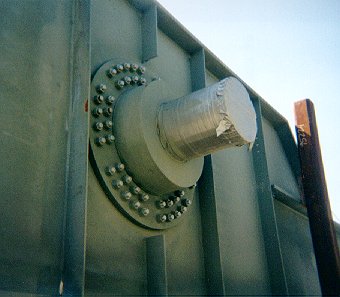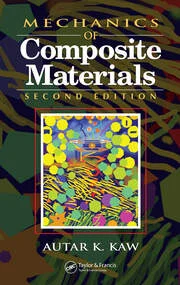Educational Research
Dr. Autar Kaw is widely recognized in the field of engineering education, particularly for his research on improving instructional methodologies, enhancing student understanding, and incorporating innovative tools to bridge theoretical concepts with practical applications. As a professor of mechanical engineering, Kaw’s work emphasizes improving student engagement and comprehension, especially within the areas of numerical methods and mathematics.
A central aspect of Kaw’s research is his focus on “numerical methods”, a foundational component of engineering education. Recognizing that students often struggle with the abstract nature of these methods, Kaw has developed comprehensive, user-friendly learning modules that integrate theory with real-world applications. His approach has emphasized the importance of contextualizing numerical methods, making them accessible and relevant to engineering students. By utilizing open educational resources (OER), he has reduced barriers to learning, making high-quality resources freely available to students worldwide.
Kaw’s “implementation of digital learning tools” is another significant contribution. Through platforms like the Numerical Methods for Engineers website, YouTube video tutorials, and digital textbooks, he has created a comprehensive suite of resources that support active learning. His digital resources not only cover theoretical content but also provide step-by-step guides, example problems, and interactive simulations, all aimed at reinforcing learning through practical engagement.
A strong advocate for student-centered learning, Kaw incorporates pedagogical methods that engage students as active participants in their education. His research findings indicate that students learn more effectively when they are actively involved in problem-solving, analysis, and critical thinking exercises. Kaw’s methods include flipped classroom models and collaborative assignments, each designed to foster deeper understanding and long-term retention of material.
Moreover, Kaw’s work has demonstrated the “positive impacts of using open resources” on educational outcomes. His commitment to open access and OER development reflects his belief that education should be inclusive and accessible. Studies conducted by Kaw and his colleagues reveal that students who use these open resources often perform better in assessments and show greater enthusiasm for the subject matter, likely due to the ease of access and the relevance of the materials.
In summary, Dr. Autar Kaw’s contributions to engineering education have had a transformative impact on how numerical methods are taught and learned. His commitment to enhancing instructional strategies through open resources, active learning, and digital tools has set a new standard in the field, influencing educators worldwide and improving educational outcomes for students. Kaw’s work underscores the importance of accessibility, engagement, and practical application in engineering education, making complex subjects more approachable and applicable for future engineers.
Composite Materials
Dr. Autar Kaw is a renowned researcher in the field of composite materials, with significant contributions to understanding and optimizing the mechanical behavior of these materials. His research primarily focuses on the design, analysis, and applications of composites—materials made from two or more constituent materials with distinct physical or chemical properties, which, when combined, produce a material with characteristics different from the individual components.
Dr. Kaw’s work in composite materials has addressed critical issues in structural integrity, particularly in fiber-reinforced composites. These materials, often used in aerospace, automotive, and civil engineering applications, are valued for their strength-to-weight ratio, stiffness, and resistance to corrosion. However, they pose unique challenges in terms of anisotropic behavior, damage tolerance, and degradation over time, which Kaw’s research has extensively examined.
One of the key areas of Dr. Kaw’s research is the study of mechanics of composite materials, where he has contributed to the development of analytical methods to predict how these materials respond under various loads. His work has advanced computational models that help in predicting stress, strain, and failure mechanisms in composites. These models are essential for engineers to design safe and efficient structures, as they enable accurate predic tions of performance and lifespan. In addition to his research, Dr. Kaw has contributed to the educational field, authoring textbooks and developing resources that make the study of composite materials accessible to students and professionals. His textbook Mechanics of Composite Materials* is widely regarded as an essential resource in the field, offering detailed explanations of complex concepts and practical applications. This work has become a standard reference in engineering education, supporting the next generation of engineers and researchers in composite materials.
Bridge Design Research
Dr. Autar Kaw’s research in bascule bridge design has significantly advanced the understanding and optimization of these complex movable structures. Bascule bridges, often employed in waterways to allow the passage of both vehicle and maritime traffic, require precise design to balance structural integrity, operational efficiency, and cost-effectiveness. Dr. Kaw, a prominent figure in the field of engineering mechanics and materials science, has concentrated on addressing these specific challenges through both theoretical and applied methodologies.

One of the primary focuses of Dr. Kaw’s research has been the mechanics of bascule bridge movements, particularly the design of the fulcrum of such bridges. In his studies, he has analyzed how varying loads affect bridge elements such as trunnions, counterweights, and girder systems. By applying advanced computational techniques, including finite element analysis (FEA), Kaw has been able to simulate load distributions and stress concentrations that occur in real-world scenarios. These simulations contribute to the optimal placement and sizing of fulcrum bridge components, reducing material requirements while maintaining structural reliability.
Sports Analytics
Autar Kaw’s research in sports analytics notably includes his development of metrics to analyze sports outcomes, particularly in college football. His work investigates season unpredictability—what he calls “topsy-turvyness”—which quantifies the variance in game outcomes to understand trends, unpredictability, and overall season dynamics. This metric sheds light on how seasons progress under unexpected conditions, providing a unique perspective for understanding competitive balance and team consistency across games.



